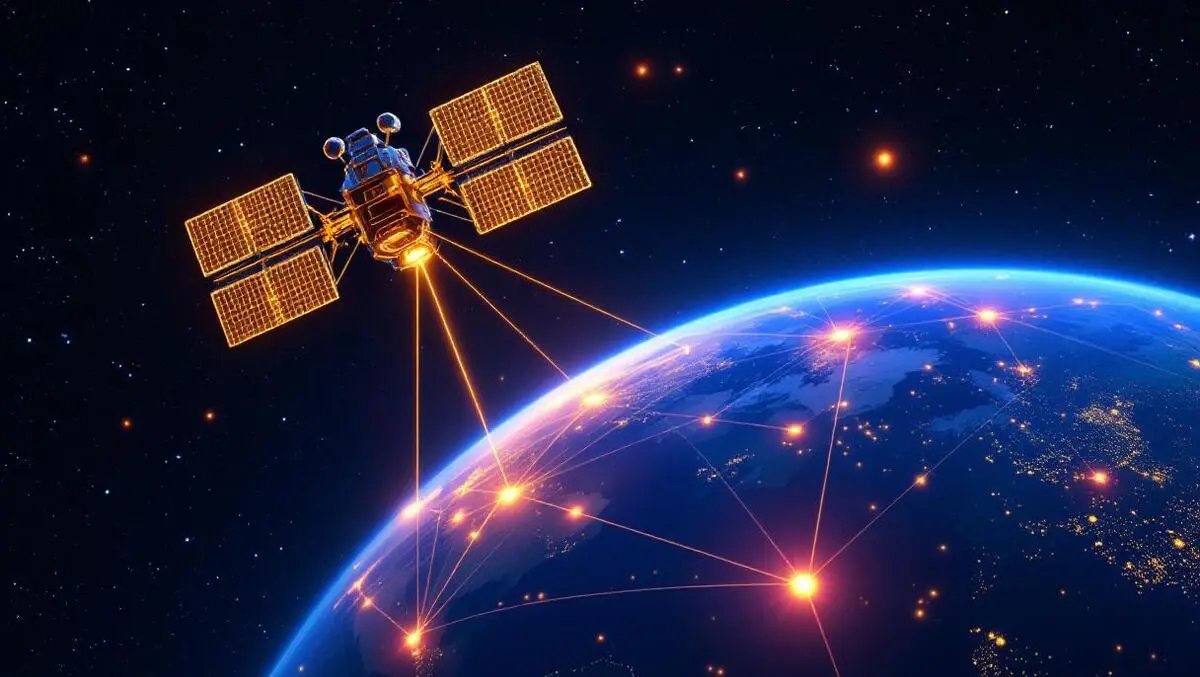
Satellite IoT market to reach USD $4.7 billion by 2030
New research from IoT Analytics projects that the global market for satellite IoT connectivity and equipment will reach USD $4.7 billion by 2030, with an expected compound annual growth rate (CAGR) of 26% over the forecast period.
The IoT Analytics Satellite IoT Market Report 2025–2030 underpins this analysis, highlighting that the number of satellite IoT connections stood at 7.5 million globally in 2024. This figure is set to increase considerably as technological advances continue to influence the sector and demand for connectivity in remote areas strengthens.
Growth factors
The report identifies five primary drivers behind this projected market expansion. These include ongoing reductions in the cost of satellite technology thanks to technological advancements, the adoption of multi-orbit and hybrid network strategies by providers, the emergence and adoption of standardised connectivity protocols, significant government investments in satellite initiatives and mega-constellations, and the increasing use of satellite connectivity in automotive and transportation industries.
According to IoT Analytics, these factors collectively create an environment in which satellite IoT can play a vital role in global connectivity, especially in regions and industries where traditional wired or cellular solutions are not viable.
Industry context
Satellite IoT currently accounts for just 7.5 million of the 18 billion total IoT devices, but the capabilities it brings to remote and hard-to-reach environments are seen as crucial. Knud Lasse Lueth, Chief Executive Officer at IoT Analytics, commented:
7 million satellite IoT connections may look small next to 18 billion total IoT devices, but they solve the hardest problem in connectivity: Reaching the places where nothing else works. With falling launch costs, open standards and hybrid multi-orbit networks, it has become the final puzzle piece for truly ubiquitous, global connectivity, and we expect the segment to grow 20%+ annually over the next 5-10 years.
The market is undergoing a transformation as proprietary and non-standardised systems give way to open, multi-technology approaches. Satyajit Sinha, Principal Analyst at IoT Analytics, added:
The satellite IoT market is evolving from proprietary, non-standardized systems—each tailored to a vendor's own connectivity stack—toward a standardized, multi-technology landscape that includes 3GPP NB-NTN, NR-NTN, LoRaFHSS, and mioty. This shift is drawing in both traditional satellite providers and new players from the cellular and unlicensed LPWAN domains, who are adopting open standards to stay competitive. On the other end, Starlink is accelerating disruption by leveraging its capital scale and low-cost architecture to position itself as both a satellite backhaul provider and a direct IoT connectivity vendor. The result is a more competitive market—defined by open, hybrid architectures where interoperability, scale, and flexibility are now the key levers of success.
These changes in technology and business approach are broadening the scope of satellite IoT beyond traditional sectors such as maritime and aviation, driving increased participation from diverse industry stakeholders.
Return on investment
With the shift in market focus and growing investment, the consideration of return on investment (ROI) becomes increasingly important. Kalpesh Baviskar, Analyst at IoT Analytics, provided further context:
ROI is central—for both satellite operators and end-users. Historically, satellite IoT was limited by infrastructure and focused on high-margin sectors like maritime and aviation. Now, rising demand for broadband is driving major investments, but operators will prioritize consumer and enterprise markets first due to higher ARPU. As networks scale, some capacity will support IoT. The key question for users is whether the cost of satellite modules and subscriptions is justified by the value of the data. In high-impact use cases like remote monitoring, the ROI can make sense—but only if the economics align.
According to IoT Analytics, this emerging market is witnessing increased attention from both investors and end-users, spurred by the potential value satellite IoT can generate in critical use cases. Decisions on network investments and adoption are increasingly being evaluated in terms of economic viability and the operational benefit derived from access to new streams of data in otherwise unconnected environments.
The Satellite IoT Market Report 2025–2030 details these and other findings, providing comprehensive insights into connectivity trends, sector-specific drivers, and projections for the years ahead. The full report is available for purchase, and key findings have been made available in a public research article.


